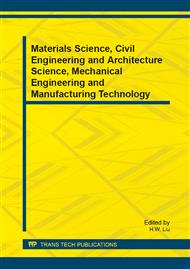p.129
p.133
p.137
p.141
p.145
p.150
p.154
p.158
p.162
Effect of Y2O3 Content on the Properties of Alumina-Based Ceramic Cores
Abstract:
A series of alumina cores with different content of yttria were prepared by sintered at 1450°C. The flexural strength at room temperature, high temperature deformation and shrinkage rate of alumina based ceramic core were determined. the phase evolution and microstructure were studied by scanning electron microscopy (SEM) ,X-ray diffraction (XRD).The optimal yttria content on the combined properties of these cores were discussed. The results explained that The Al2O3 particles reacted with some Y2O3 particles to form a polycrystalline composition 3Y2O3·5Al2O3 (YAG), which activated the lattice and promoted sintering. Most of yttria, however, were concentrated in the ceramic grain boundaries, playing a role in improving grain refinement and microstructure; the cores achieved the best comprehensive performance when the content of yttria was 10%.
Info:
Periodical:
Pages:
145-149
Citation:
Online since:
January 2014
Authors:
Keywords:
Price:
Сopyright:
© 2014 Trans Tech Publications Ltd. All Rights Reserved
Share:
Citation:


